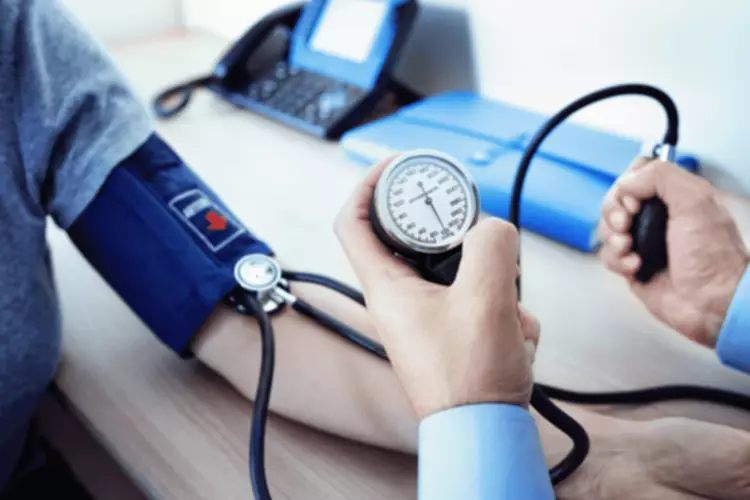
Understanding how alcohol affects our brain also offers insight into how our brains work in general. So the next time you drink, even though you may be killing some valuable brain cells, you can toast to the fact that you’re contributing to neuroscience. Although GABA activity doesn’t entirely explain alcohol’s effects and we don’t know exactly what the delta receptor does, a big part of the mystery seems to have come unraveled. Because GABA is the primary inhibitory neuron in the brain, it can affect virtually every system. Dopamine is released in our brains during happy, contented moments, whether we’re enjoying a favorite meal, laughing with our friends, or feeling satisfied after accomplishing a goal. This dynamic neurotransmitter is essential to our overall well-being and mental health, and it’s integral to learning, regulating mood, and making memories.

Could Ozempic and similar drugs be used to treat substance use disorders?
Behavioral addictions are real, and some, like gambling, are more likely to cause addiction than others. The key is to be mindful of your behavior and how it affects your life and seek help if you think your behaviors might be problematic. Some have even gone so far as to recommend “dopamine fasting” or a “dopamine detox,” a trend that involves avoiding any activity that might trigger the release of the hormone.

Figure S1
These varying results may be due to the use of different animal models or different research protocols. Researchers are also investigating whether drugs that normalize dopamine levels in the brain might be effective for reducing alcohol cravings and treating alcoholism. Individuals with low dopamine levels may experience a loss of motor control, such as that seen in patients with Parkinson’s disease. They can also develop addictions, cravings and compulsions, and a joyless state known as “anhedonia.” Elevated levels of dopamine can cause anxiety and hyperactivity. Fulton T. Crews, a pharmacology and psychiatry professor at UNC Chapel Hill and the director of the Bowles Center for Alcohol Studies at the UNC School of Medicine, has used rat models to show how binge drinking can lead to a decline alcohol and dopamine in neuron formation in the brain. Through abstinence, however, studies have shown that a regeneration of brain function, metabolism and brain volume (including white matter) is possible.
- While alcohol initially facilitates the inhibitory actions of GABA and inhibits excitatory effects mediated by glutamate transmission, chronic alcohol exposure results in compensatory changes in these amino acid transmitter systems that are opposite in nature and revealed upon withdrawal.
- When we’re repeatedly exposed to our pleasure-producing stimuli, our brains adjust and, eventually, we need more and more just to feel “normal,” or not in pain.
- In addition, those individuals may be predisposed to drink more heavily and develop an alcohol addiction.
- There is also a risk of becoming reliant on alcohol to manage anxiety, leading to other physical and mental health problems.
- Scientists have long sought the mechanisms by which alcohol acts on the brain to modify behavior.
- Complex brain functions such as memory, consciousness, alertness, and learning are controlled by multiple neurotransmitter and neuromodulatory systems acting in concert.
- Then as you go along with that activity, continue checking in with yourself to make sure everything is feeling calm and not like you’re getting too into the “high” of the act.
Place obstacles between you and your addictive behaviors
- Having a healthy level of dopamine is necessary, and if your body isn’t producing enough, it can lead to problems such as depression and insomnia.
- So the next time you drink, even though you may be killing some valuable brain cells, you can toast to the fact that you’re contributing to neuroscience.
- For example, Yoshimoto and colleagues11 and Gongwer and colleagues23 found that although HAD and LAD rats differed in their basal level of extracellular DA, they did not differ in CNS DA release after intraperitoneal injection of ethanol.
- Swedish pharmacologist and neuroscientist Arvid Carlsson won the Nobel prize in 2000 for his research on dopamine, showing its importance in brain function.
- Although GABA activity doesn’t entirely explain alcohol’s effects and we don’t know exactly what the delta receptor does, a big part of the mystery seems to have come unraveled.
While alcohol initially facilitates the inhibitory actions of GABA and inhibits excitatory effects mediated by glutamate transmission, chronic alcohol exposure results in compensatory changes in these amino acid transmitter systems that are opposite in nature and revealed upon withdrawal. Manifestations of this resultant imbalance in GABA-mediated inhibition and glutamate-mediated excitation in the CNS are known to underlie expression of various withdrawal symptoms, most notably CNS hyperexcitability (Becker, 1998; Littleton, 1998; Hillbom et al., 2003). Indeed, it is well established that neuroadaptations in glutamatergic and GABAergic signaling systems following chronic alcohol exposure play a prominent role in mediating a variety of dependence and withdrawal-related sequlae (Fadda and Rossetti, 1998; Lovinger and Roberto, 2013).
Similarly, chronic alcohol-induced enhancement of AMPA receptor expression and function has been reported in cortex (Haugbol et al., 2005), hippocampus (Bruckner et al., 1997), basolateral amygdala (Lack et al., 2007), and dorsomedial striatum (Wang et al., 2012). Selective pharmacologic blockade of AMPA receptors in the basolateral amygdala attenuated withdrawal-related anxiety-like behaviors in rats, suggesting a role for https://ecosoberhouse.com/ adaptations in AMPA receptors in expression of withdrawal symptoms (Lack et al., 2007). The β2 subunit-containing nAChR antagonist DHβE (1 µM) depressed dopamine release in caudate and putamen of control and ethanol subjects (A). Dopamine release was compared across varying train stimulations (6 pulses at the indicated frequencies) before and after nAChR blockade with DHβE (1 µM) in caudate and putamen (B, C; values normalized to single-pulse values before DHβE application). Gene expression of cholinergic interneuron markers and several nAChR subunits was not changed following chronic alcohol consumption and abstinence (D, E). Ethanol is a liposoluble neurotropic substance which penetrates the blood-brain barrier and inhibits central nervous system (CNS) functions; it is directly toxic to the brain.
- Berman recalls that one of her research subjects, who had been sober for over a decade, pressed the panic button when she saw a picture of alcohol during her MRI.
- Interestingly, those with the poorest impulse control — who would be considered most at risk of relapse after a period of sobriety — responded best to the treatment.
- SK channels regulate membrane excitability by shaping excitatory postsynaptic potentials (EPSP) and controlling intrinsic activity, dendritic integration, and pacemaker firing (Bond et al., 2005; Fakler and Adelman, 2008).
- Typically, those who join the sober curious movement don’t consider themselves to have an alcohol abuse disorder — they simply find that periods of sobriety offer more than drinking in moderation might.
- Once isolated from cholinergic influence, dopamine terminals from the multiple abstinence male subjects in control and alcohol treatment groups responded similarly to varying frequency stimulation.
Do not sell my personal information Privacy Policy and Terms of Use

Furthermore, the balance of altered dopamine changes and subsequent effects on cellular excitability and fast synaptic transmission in the caudate and putamen will likely dictate the relative behavioral control by the associative and sensorimotor circuits. In this context, the decreases in release in the putamen of the repeated abstinence male monkeys may limit behavioral plasticity to a greater extent in this region relative to the caudate. This could be one factor contributing to the development of invariant alcohol consumption following long-term drinking with repeated abstinence observed in a previous study of cynomolgous macaques 8. In this context, the different dopaminergic changes in actively drinking versus repeated abstinence males are intriguing. Similarly, increased behavioral reactivity to stress following chronic alcohol exposure and withdrawal has also been demonstrated in animals. Of clinical significance, a history of chronic alcohol exposure and withdrawal has been shown to enhance the ability of stress to trigger relapse-like behavior in animal models (Le et al., 2000; Liu and Weiss, 2002a; Gehlert et al., 2007; Marinelli et al., 2007; Sommer et al., 2008).

Quitting Alcohol: What Happens To Your Brain When You Stop Drinking?

Activation of the adenosine system causes sedation, whereas inhibition of this system causes stimulation. Stimulants that inhibit the actions of adenosine include caffeine as well as theophylline, a chemical found in tea. Animal studies have shown that caffeine and theophylline reduce the sedative and motor-incoordinating effects of alcohol (Dunwiddie 1995), although these substances do not alleviate symptoms of intoxication in humans. Biochemical evidence indicates that short-term exposure to alcohol of nerve cell cultures in the laboratory increases the levels of adenosine that can interact with adenosine receptors. Thus, an alcohol-induced increase in adenosine levels might be responsible for part of alcohol’s sedative actions. Long-term, or chronic, alcohol exposure2 can lead to adaptive changes within brain cells.

Recent Comments